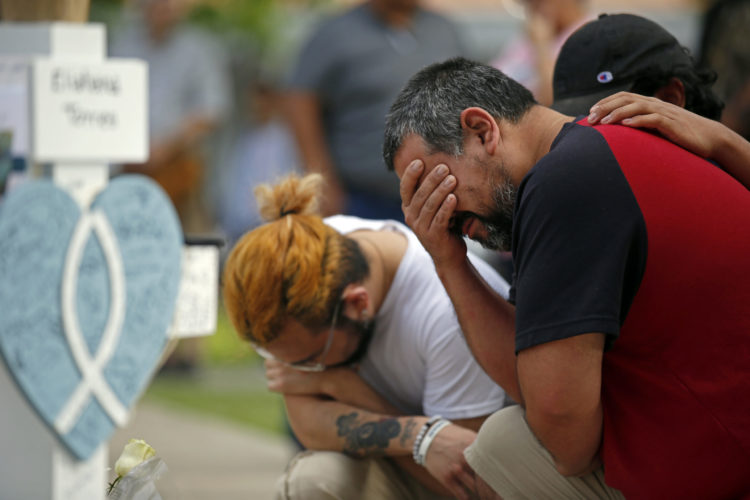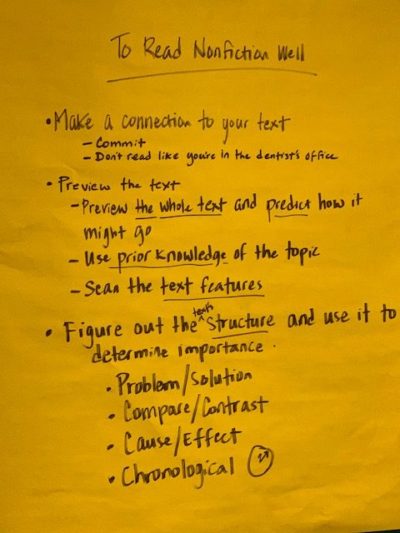How much difference does three days make?
Too much, at least when it comes to our gnat-like attention span. Three days is the time it takes for the public to shift from outrage to resignation in response to a mass shooting. That’s according to research by two professors at Princeton University, summarized in a subscriber newsletter by New York Times “On Politics” editor Blake Hounshell. The research found that active grief and outrage remain intense only in the heart of the community that’s been assaulted: “We found that the emotional impact of mass shootings is substantial, but it is local, short-lived, and politicized.”
Three days. Which means that by this past Memorial Day weekend, much of the world will have moved on from the May 24 massacre in Uvalde, Texas. It didn’t even take that long for the far right to shrug aside the slaughter of 19 schoolchildren and two teachers as less important than their gun rights. “Thoughts and prayers” were offered post-haste, just as they always are. Just as they were barely a week earlier when 10 people were mowed down at a grocery store in Buffalo, New York. Each time demands flooded social media (“Enough is enough! It’s time to do something!!”), only to become rendered impotent by the see-saw that followed.
See: It’s not guns; it’s the mentally ill. Saw: If the mentally ill didn’t have guns, they couldn’t end 21 lives in a matter of minutes. See: Without assault rifles, there might be injury and death, but not of that magnitude. Saw: The sacred Second Amendment!
In the three days — three days — following the slaughter at Robb Elementary School, I read arguments that backhoes are less lethal than guns. Others that boys under 18 must be allowed to buy guns because teenagers helped defeat the British in the American Revolution. (Never mind that that was 250 years ago, before there was a nation that now supports a massive, professional military.) One that when Cain killed Abel with a rock, God didn’t ban rocks. Others that when a child hits someone with a stick, you take away the stick. Far too many that it’s too late to, as my late father would say, put this s**t back in the bag.
I have been steeped in traditional journalism long enough to have watched gun rights become the third rail not just of politics, but also of journalism. So, too, many of the issues that now lacerate these dis-United States: abortion, taxes, gender, religion. But especially gun rights.
I have respected the journalistic line of non-judgment for the most part. I have friends and relatives who hunt and stand strong on the imprimatur of the Second Amendment. I have others who love target shooting as something of a meditation, maybe like golf or pool. Even more who appreciate the craftsmanship of a finely crafted gun much as they would any well-honed tool.
Yet now a respected editor questions whether it is time to move past conventions of photo sensibility and start showing the reality of 7-year-olds riddled with bullets. A reporter I know from a top-masthead news site spent years on the gun-slaughter beat; she won’t publish her heartbreaking essay about the personal toll it took on her because she fears it would tank her respect in the profession. The Democrats are hoping for a negotiated compromise with Republicans over “reasonable” gun control laws. The Republicans are fighting amongst themselves over who is the greater defender of the Second Amendment. President Joseph R. Biden showed up to sit with grieving parents. Former President Donald J. Trump showed up to cheer the National Rifle Association.
See-saw. See-saw.
I slam against the irony (I know journalists are never supposed to use that word, but pfffft!) of children climbing out a window to seek safety in a funeral home across the street. A funeral home. I think of the irony of the at-all-costs defense of the Second Amendment — which has been bloated to fit purposes that have little to do with the times in which it was written — versus the shrug at the need to defend second-, third- and fourth-graders. I try to reconcile the “pro-life” movement with this continued anti-life carnage — and simply can't.
No one, in these dis-United States, is going to take away the right to own guns. But the right to military-grade assault rifles? I have a copy of the U.S. Constitution and, no matter how hard I squint when I read it, I don’t see language that applies.
Then, then, then … even if I could stretch that far, I think of those now-gone 19 schoolchildren in Texas and of the others before and elsewhere who were injured and the more and more and more who bore impossible witness, and try to juxtapose that with the wonder I experienced last Friday — three days after the horror in Texas — at another elementary school, this one in a mountain town in north central Washington.
I had volunteered with Mountain Editor at a Young Writer’s Conference. We stood before bleachers jammed with noisy innocence to be introduced with the other volunteers, then braved a classroom of fourth- and fifth-graders.
Too much, at least when it comes to our gnat-like attention span. Three days is the time it takes for the public to shift from outrage to resignation in response to a mass shooting. That’s according to research by two professors at Princeton University, summarized in a subscriber newsletter by New York Times “On Politics” editor Blake Hounshell. The research found that active grief and outrage remain intense only in the heart of the community that’s been assaulted: “We found that the emotional impact of mass shootings is substantial, but it is local, short-lived, and politicized.”
Three days. Which means that by this past Memorial Day weekend, much of the world will have moved on from the May 24 massacre in Uvalde, Texas. It didn’t even take that long for the far right to shrug aside the slaughter of 19 schoolchildren and two teachers as less important than their gun rights. “Thoughts and prayers” were offered post-haste, just as they always are. Just as they were barely a week earlier when 10 people were mowed down at a grocery store in Buffalo, New York. Each time demands flooded social media (“Enough is enough! It’s time to do something!!”), only to become rendered impotent by the see-saw that followed.
See: It’s not guns; it’s the mentally ill. Saw: If the mentally ill didn’t have guns, they couldn’t end 21 lives in a matter of minutes. See: Without assault rifles, there might be injury and death, but not of that magnitude. Saw: The sacred Second Amendment!
In the three days — three days — following the slaughter at Robb Elementary School, I read arguments that backhoes are less lethal than guns. Others that boys under 18 must be allowed to buy guns because teenagers helped defeat the British in the American Revolution. (Never mind that that was 250 years ago, before there was a nation that now supports a massive, professional military.) One that when Cain killed Abel with a rock, God didn’t ban rocks. Others that when a child hits someone with a stick, you take away the stick. Far too many that it’s too late to, as my late father would say, put this s**t back in the bag.
The third rail
I have been steeped in traditional journalism long enough to have watched gun rights become the third rail not just of politics, but also of journalism. So, too, many of the issues that now lacerate these dis-United States: abortion, taxes, gender, religion. But especially gun rights.
I have respected the journalistic line of non-judgment for the most part. I have friends and relatives who hunt and stand strong on the imprimatur of the Second Amendment. I have others who love target shooting as something of a meditation, maybe like golf or pool. Even more who appreciate the craftsmanship of a finely crafted gun much as they would any well-honed tool.
Yet now a respected editor questions whether it is time to move past conventions of photo sensibility and start showing the reality of 7-year-olds riddled with bullets. A reporter I know from a top-masthead news site spent years on the gun-slaughter beat; she won’t publish her heartbreaking essay about the personal toll it took on her because she fears it would tank her respect in the profession. The Democrats are hoping for a negotiated compromise with Republicans over “reasonable” gun control laws. The Republicans are fighting amongst themselves over who is the greater defender of the Second Amendment. President Joseph R. Biden showed up to sit with grieving parents. Former President Donald J. Trump showed up to cheer the National Rifle Association.
See-saw. See-saw.
I slam against the irony (I know journalists are never supposed to use that word, but pfffft!) of children climbing out a window to seek safety in a funeral home across the street. A funeral home. I think of the irony of the at-all-costs defense of the Second Amendment — which has been bloated to fit purposes that have little to do with the times in which it was written — versus the shrug at the need to defend second-, third- and fourth-graders. I try to reconcile the “pro-life” movement with this continued anti-life carnage — and simply can't.
No one, in these dis-United States, is going to take away the right to own guns. But the right to military-grade assault rifles? I have a copy of the U.S. Constitution and, no matter how hard I squint when I read it, I don’t see language that applies.
Elementary innocence and future power
Then, then, then … even if I could stretch that far, I think of those now-gone 19 schoolchildren in Texas and of the others before and elsewhere who were injured and the more and more and more who bore impossible witness, and try to juxtapose that with the wonder I experienced last Friday — three days after the horror in Texas — at another elementary school, this one in a mountain town in north central Washington.
I had volunteered with Mountain Editor at a Young Writer’s Conference. We stood before bleachers jammed with noisy innocence to be introduced with the other volunteers, then braved a classroom of fourth- and fifth-graders.




